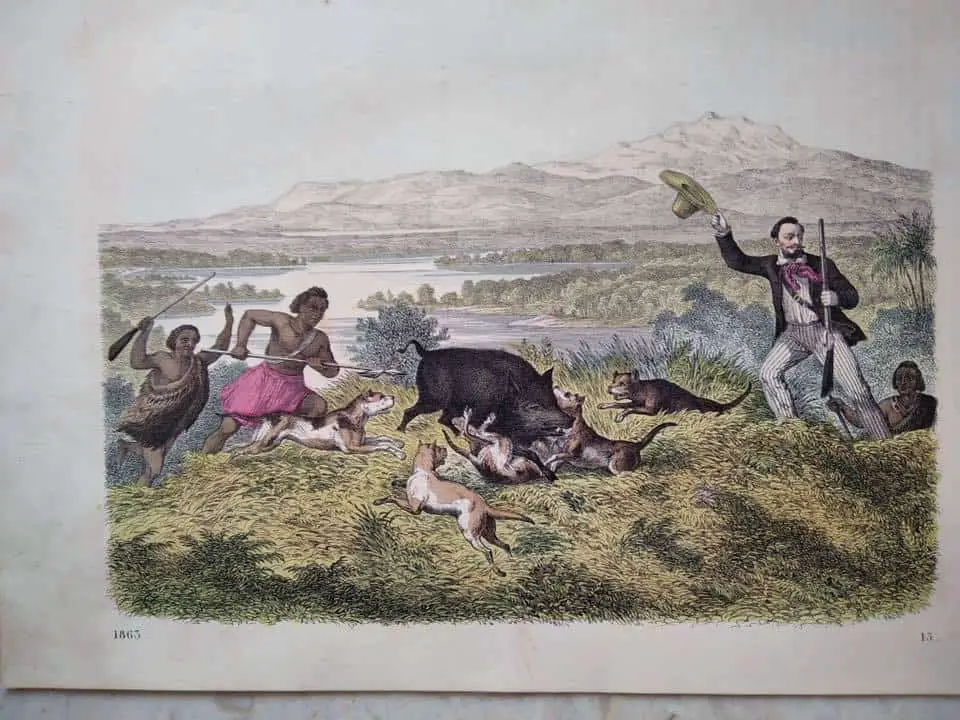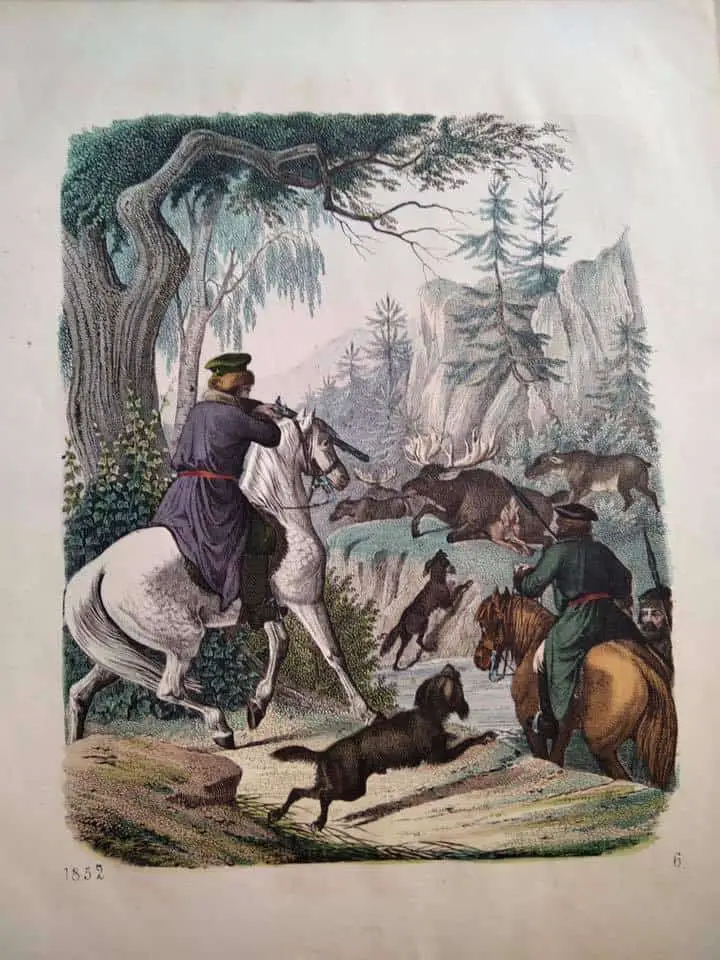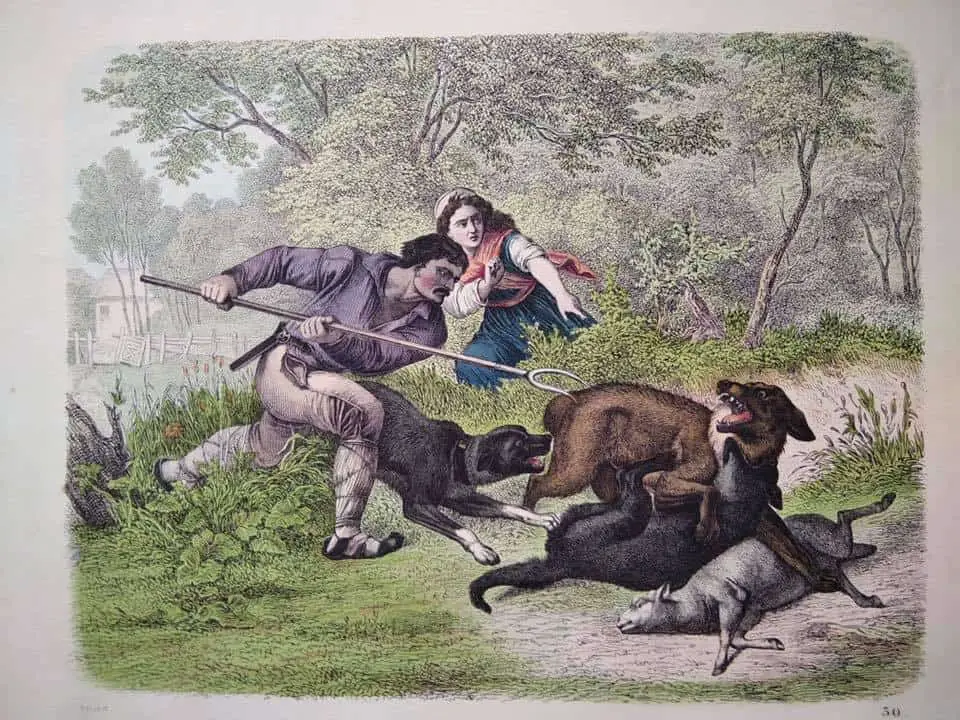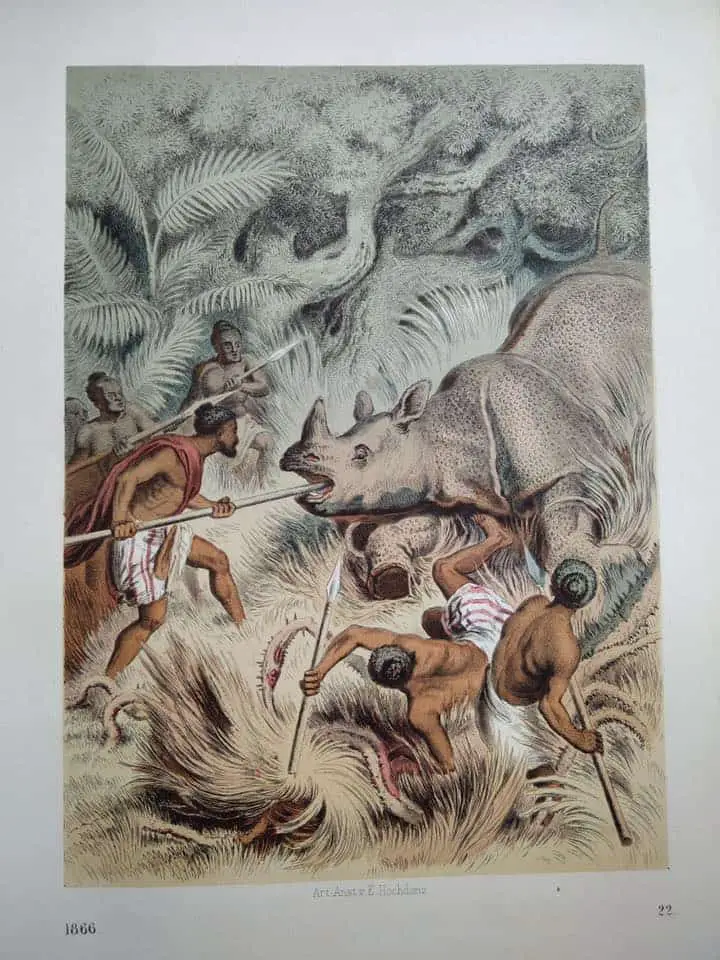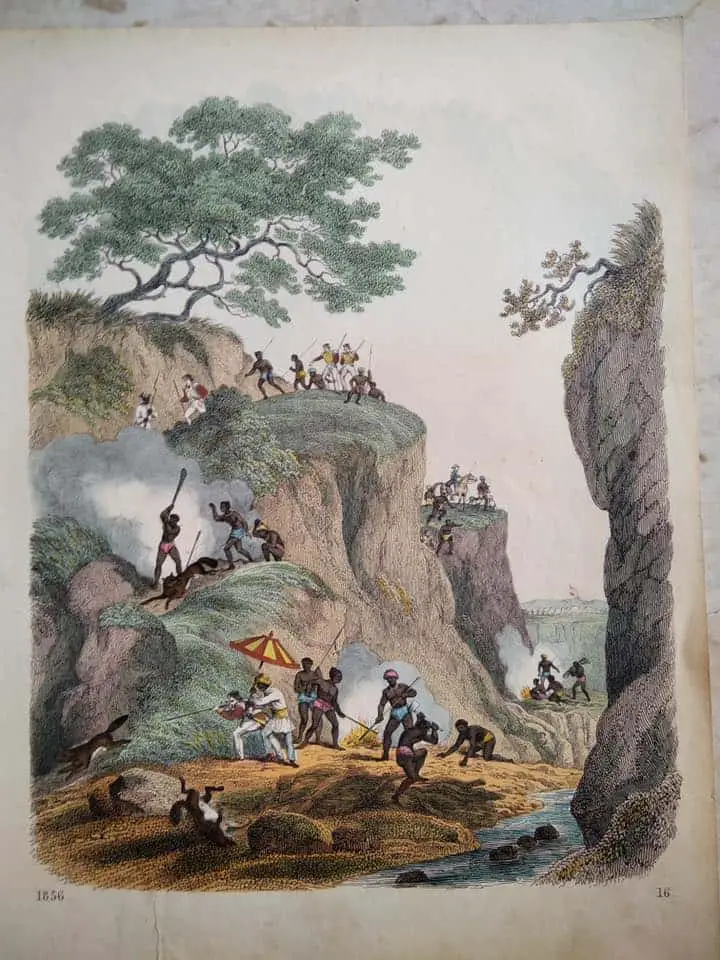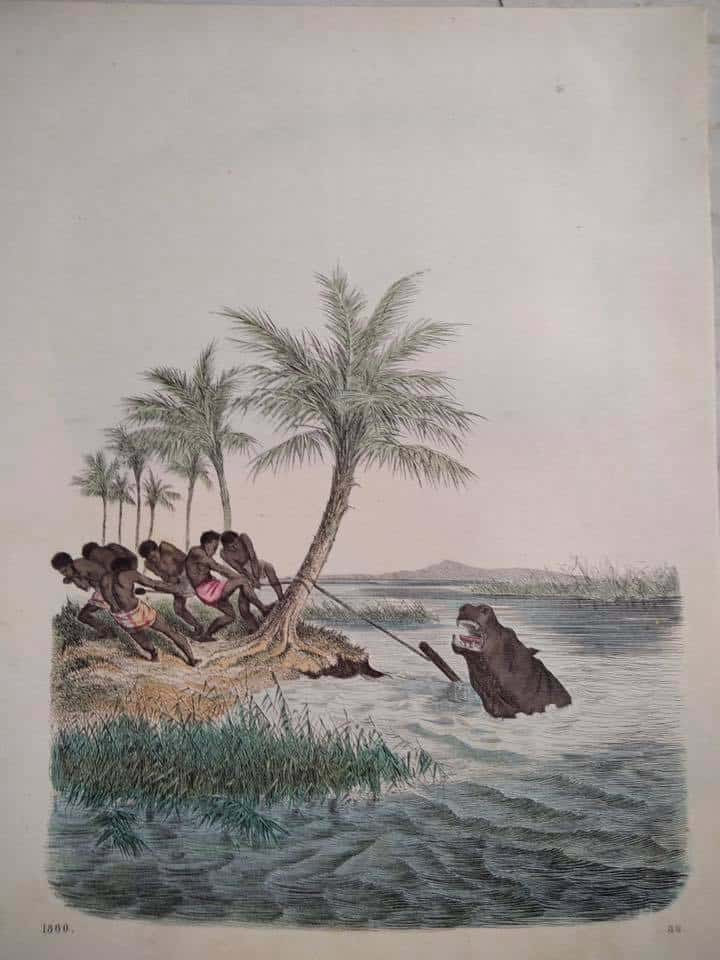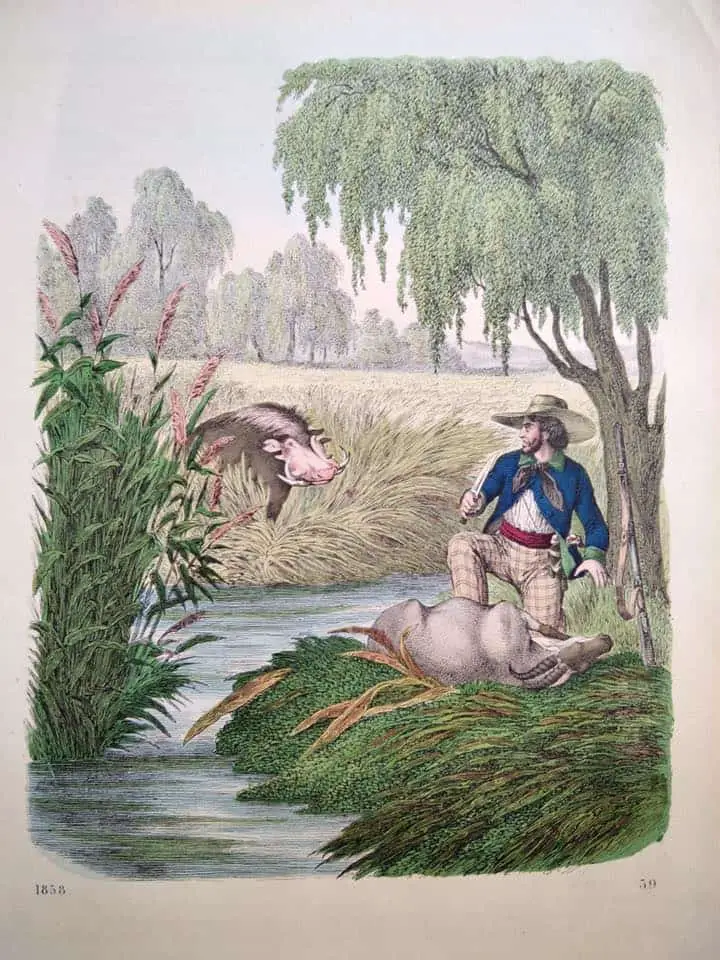Hard to remember now, but ‘damned’ used to be a full on swear word. A teacher at high school once pounced on me for using it (though by the 1990s I think she was being ridiculous). ‘Damned’ was certainly shocking 100 years earlier than that, in 1893, when Ambrose Bierce published his horror short story and called it “The Damned Thing”.
It’s out of copyright and you can read “The Damned Thing” at Project Gutenberg (3,233 words).
TYPES OF TERROR
Stephen King has spoken of three types of terror:
The Gross-out: the sight of a severed head tumbling down a flight of stairs, it’s when the lights go out and something green and slimy splatters against your arm. The Horror: the unnatural, spiders the size of bears, the dead waking up and walking around, it’s when the lights go out and something with claws grabs you by the arm. And the last and worse one: Terror, when you come home and notice everything you own had been taken away and replaced by an exact substitute. It’s when the lights go out and you feel something behind you, you hear it, you feel its breath against your ear, but when you turn around, there’s nothing there …”
Stephen King
“The Damned Thing” belongs to the second category — the horror, describing the mutilated body. But by the end of the story, Bierce has moved into the realm of terror. The scariest thing of all is something we cannot see.
This is exactly the sort of terror/horror parodied by the podcast (and book) Welcome To Night Vale. From episode 2 of Night Vale (“Glow Cloud”):
Apparently the cloud glows in a variety of colors, perhaps changing from observer to observer, although all report a low whistling when it draws near.
episode 2 transcript
WHAT HAPPENS IN “THE DAMNED THING”
PART ONE
In a dark room in the mountains of America somewhere, a coroner stands over a dead body lying on a table. The coroner holds a book. Other men quietly line the walls. These men are jurors, waiting for their murder suspect.
Finally he arrives, a 27-year-old writer. The conversation between the coroner and this man reveals that the writer was near the dead man when he died. He had come to observe the dead man (when he was alive) as he thought he’d make a good character study for a work of fiction.
The coroner is not willing to believe anything the fiction writer says in regards to the circumstances of death, probably knowing full well that fiction writers have a good imagination and can make anything up. So the coroner is scornful of the account the writer says he has just provided the newspaper, and hopes he will tell the true version under oath.
The writer insists that the mode of death is ‘incredible’ and wouldn’t work as fiction. He pulls out a copy of what he wrote for the newspaper and begins to read.
This leads to a story within a story, with a storyteller narrator. Bierce introduced us to the coroner first, so we are encouraged (along with the coroner) to wonder if this 27 year old writer is reliable.
Cliffhanger: How did Morgan die?
PART TWO
Ambrose Bierce uses a lot of words to build up this scene, but really only this happens: The writer is out hunting for quail (well, hoping to hunt for quail) when the dead man (Hugh Morgan), who is not initially dead, heh heh, is startled by something moving in a bush. “That damned thing!” he exclaims. Turns out these are his last words.
Though the author (William Harker) doesn’t see what happens, he describes an optical illusion. Morgan seems to come and go from his vision, then he sees him partially, then he realises Morgan is dead.
All he has heard was a scream from whatever lurked in the vegetation. Something unseen tramples the wild oats and retreats into nearby wood. Harker is filled with terror.
Cliffhanger: What killed Morgan?
PART THREE
Part Three begins with a scene now familiar to readers of the crime genre — a description of the man’s naked dead body, back in his cabin.
Harker is accused of being crazy. The foreman and coroner ask him which asylum he last escaped from.
He recognises the book in the coroner’s hands and points out that it’s the diary of the dead man. He wants to see it and suggests it may be useful, but the coroner says it was all written before the time of death and therefore not useful to solving the facts of the murder.
The reader knows, along with Harker, that the dead man had seen the beast before, otherwise he wouldn’t have exclaimed “That damned thing!” So we know there’s a good description of it inside that book.
The jury comes to the unlikely conclusion that there was a mountain lion and also that the deceased had some sort of seizure. (They obviously can’t decide between themselves, leaving the reader to think of other scenarios.)
Cliffhanger: What’s inside the book?
PART FOUR
Part Four opens with some sort of writing about the court case, after it has concluded. The narrator is speculating that the coroner didn’t want to confuse the jury by reading the contents of the diary.
Then we have pertinent excerpts from the diary (as implicitly promised to the reader via the cliffhanger).
Morgan has described the strange behaviour of his dog, but is it really his dog? Mine is an unpopular reading, I’m sure, but maybe it wasn’t his dog he saw. Maybe this thing is a werewolf?
It is also revealed that the reason the dead man invited Harker to his house is precisely because he has a level head and can judge if he’s going mad (not because he is mad himself). The final entry tells us he has come up with a solution to his problem, though we don’t know what that solution is. I assume he has come up with the idea of simply shooting it dead.
The short story ends with the revelation that the dead man has achieved heightened senses before his death. I am left wondering if he has gone mad after all. Or is he turning into a werecreature?
This is deliberate, of course, because the horror genre has always been an outworking of psychological disturbances — our greatest fears, anxieties, hallucinations and (more recently) coded as mental illness.
STORY STRUCTURE OF “THE DAMNED THING”
SHORTCOMING
Who’s the ‘main character’? This question is never cut and dried in a story with multiple diegetic levels but for my purposes, the main character is Harker.
I feel his name is somewhat symbolic. I think of ‘hark’, as in ‘Hark, the herald angels sing’, an archaic word telling someone to pay attention. “Look!” we might say in modern English.
Harker’s disadvantage in this scenario is that he is young, he is a fiction writer (unreliable) and he is a townie come to the country (he is an outsider). He was with a man when he died and has now found himself a murder suspect, but we don’t learn much more about him than this. We are told that he has a steady, reliable and totally sane disposition. That may not be much use to him, now.
DESIRE
Harker wants to persuade the jury that he did not murder Morgan.
OPPONENT
The coroner and jurors. And for the story-within-a-story, the creature lurking in the scrub.
PLAN
Harker’s plan is to tell the truth. Fingers crossed they believe him. Actually they don’t believe him at all, but lucky for Harker, they come up with their own cockamamie explanation and let him off the hook.
BIG STRUGGLE
The Battle of the Level 0 story is the part where the jurors make their decision.
The Battle of the story-within-a-story (Part Two) is when the men come face to face with the ‘mountain lion’.
ANAGNORISIS
In a traditional crime story there’s no ‘self’ revelation for the character — it’s more a resolution of plot. That’s not to say that we readers don’t realise something about ourselves — for instance, what scares us the most. Or perhaps we’ve now got a metaphor for our psychological bugaboos.
The plot revelation is that the jury doesn’t blame Harker for the death, but can’t work it out nonetheless. This is long before the days of forensic science.
The creature which killed Morgan is never revealed, though apparently Morgan had an epiphany and promptly died. The trope where certain knowledge of evil brings immediate death is rife throughout Japanese horror, e.g. The Ring. This speaks to our very human fear that some knowledge is too much to bear, and we’re better off not knowing it.
Bierce is making use of a tactic often used in page turners, even today: The Invisible Influence. Something or someone influences events but it remains unknown to us.
While we’re on the topic of ‘page turner’ techniques, Bierce also made use of:
Hobson’s Choice: Neither the mountain lion nor the death by seizure add up, so the jurors choose both. The reader (along with Harker) wonders what the jury is going to decide.
Unsolved Mystery: Obviously this is a mystery story, as well as possibly a crime story. There are three central questions in a mystery: what happened, who did it and how did it happen? We read to find out the answer to each of these questions in turn.
Cliffhanger: Bierce knew to end each section on a cliffhanger.
Chekhov’s Gun: What’s in that book the coroner is holding?
NEW SITUATION
I have extrapolated that Harker goes back to the city as a free man, but is forever changed by the experience of knowing there are deadly things all around us which can kill, but which are invisible to human senses.

